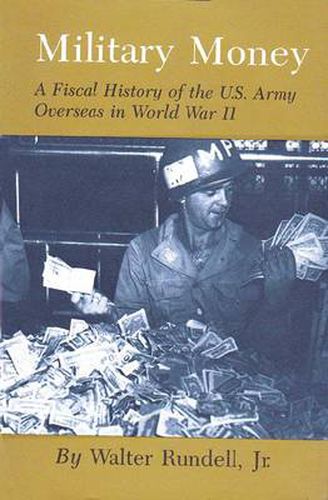Readings Newsletter
Become a Readings Member to make your shopping experience even easier.
Sign in or sign up for free!
You’re not far away from qualifying for FREE standard shipping within Australia
You’ve qualified for FREE standard shipping within Australia
The cart is loading…






This title is printed to order. This book may have been self-published. If so, we cannot guarantee the quality of the content. In the main most books will have gone through the editing process however some may not. We therefore suggest that you be aware of this before ordering this book. If in doubt check either the author or publisher’s details as we are unable to accept any returns unless they are faulty. Please contact us if you have any questions.
During World War II, the U.S. Army Finance Department disbursed approximately $176 billion. To fulfill that task Finance had to coordinate activities with foreign governments as well as other branches of the U.S. government and military branches. The department’s first priority was paying the troops, but payments to contractors, vendors, and native laborers were also important. War caught the Finance Department unprepared. Its procedures, designed for a stationary organization in peacetime, were applied without adaptation to a highly mobile wartime operation. A routine assignment such as paying troops became immensely difficult with troops scattered over large areas. Even the best efforts of personnel could not prevent lapses in service under such conditions, and fiscal administration could never keep pace with tactical innovations.
This is the first study of this important topic and the first critical analysis of the army’s use of unsuitable procedures and its lack of planning to cope with the extraordinary fiscal problems presented by World War II. The book points out the need for a realistic appraisal of the army’s fiscal obligations during combat and an accompanying change in procedures.
$9.00 standard shipping within Australia
FREE standard shipping within Australia for orders over $100.00
Express & International shipping calculated at checkout
This title is printed to order. This book may have been self-published. If so, we cannot guarantee the quality of the content. In the main most books will have gone through the editing process however some may not. We therefore suggest that you be aware of this before ordering this book. If in doubt check either the author or publisher’s details as we are unable to accept any returns unless they are faulty. Please contact us if you have any questions.
During World War II, the U.S. Army Finance Department disbursed approximately $176 billion. To fulfill that task Finance had to coordinate activities with foreign governments as well as other branches of the U.S. government and military branches. The department’s first priority was paying the troops, but payments to contractors, vendors, and native laborers were also important. War caught the Finance Department unprepared. Its procedures, designed for a stationary organization in peacetime, were applied without adaptation to a highly mobile wartime operation. A routine assignment such as paying troops became immensely difficult with troops scattered over large areas. Even the best efforts of personnel could not prevent lapses in service under such conditions, and fiscal administration could never keep pace with tactical innovations.
This is the first study of this important topic and the first critical analysis of the army’s use of unsuitable procedures and its lack of planning to cope with the extraordinary fiscal problems presented by World War II. The book points out the need for a realistic appraisal of the army’s fiscal obligations during combat and an accompanying change in procedures.